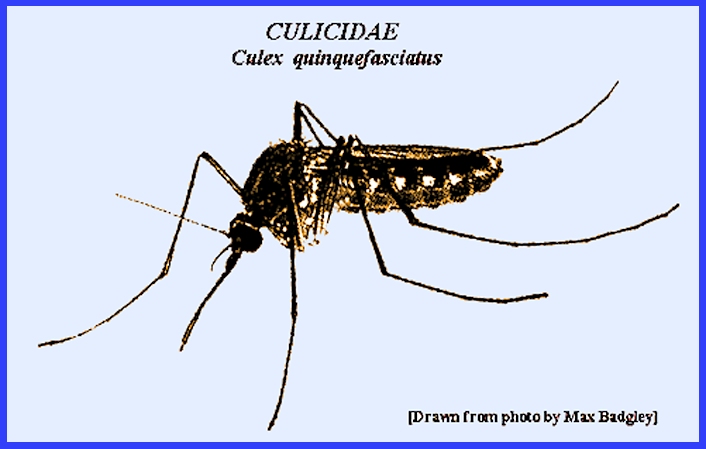File: <stlouisencephalitis.htm> <Medical
Index> <General Index> Site Description Glossary <Navigate
to Home>
|
ST. LOUIS ENCEPHALITIS (Contact) Please
CLICK on
Image & underlined links for details:
The majority of infections produces mild symptoms and go
undiagnosed, but the virus can cause severe illness and death in humans,
especially the elderly where the fatality rate can reach 30 percent. Children characteristically do not develop
serious disease. Humans and domestic mammals can acquire the virus, but are
dead-end hosts. The fowl mite, Dermanyssus gallinae
(L.) has been found to be the primary transmitter and reservoir of St. Louis
encephalitis virus. The virus is
passed through the eggs to the offspring of the mites. As chickens are also reservoirs of this
virus and as Culex spp. are
common feeders on chickens and humans, Culex
spp. are important vectors of the disease to humans. The chicken mite maintains the virus in
chickens and the mosquitoes transfer the virus to humans. The mosquitoes may also serve as vectors
from chicken to chicken (Matheson 1950).
The virus has also been isolated from other bird species, so there are
probably other reservoirs including birds that
are abundant in the urban-suburban environment, such as the house sparrow,
pigeon, blue jay, robin. etc. LIFE
CYCLE - St. Louis Encephalatis = = = = = = = = = = = =
= = = = = = = = Key References: <medvet.ref.htm> <Hexapoda> Matheson, R. 1950.
Medical Entomology. Comstock
Publ. Co, Inc. 610 p. Service, M. 2008. Medical
Entomology For Students. Cambridge
Univ. Press. 289 p Legner, E. F. 1995. Biological control of Diptera of medical and veterinary
importance. J. Vector Ecology 20(1):
59_120. Legner,
E. F.. 2000. Biological control of aquatic
Diptera. p. 847_870. Contributions to a Manual of Palaearctic
Diptera,
Vol. 1, Science Herald,
Budapest. 978 p. |
